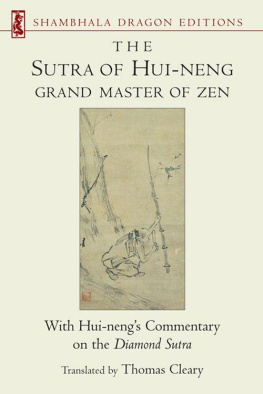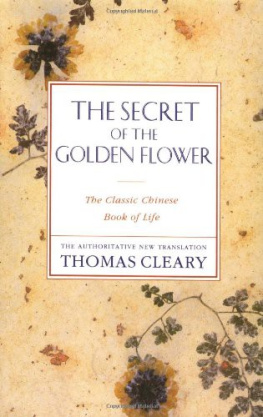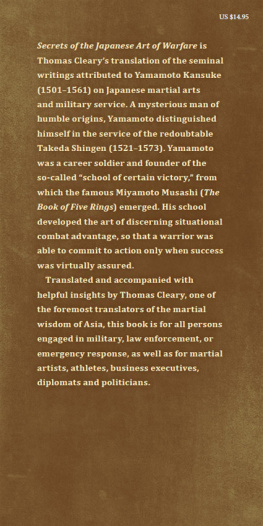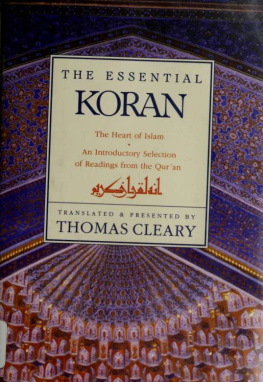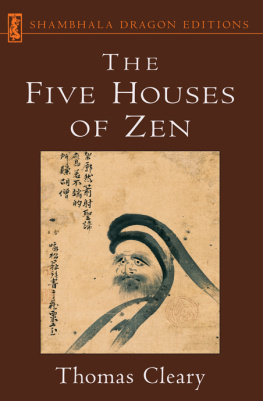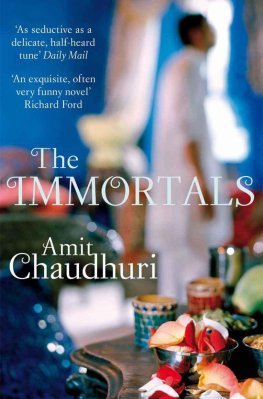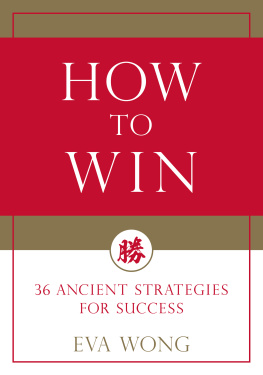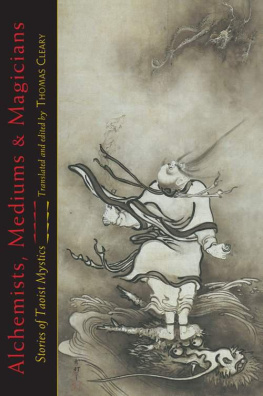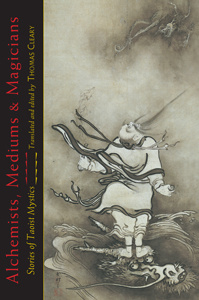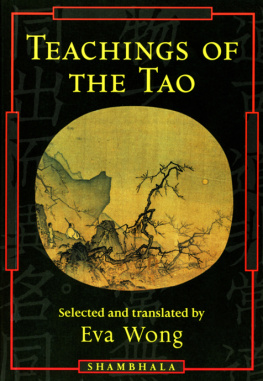Lost Legends of Immortals
Compiled by Du Guangting
Translated from the Chinese by Thomas Cleary
Translators introduction
History is one of the most ancient disciplines of Chinese civilization, originating in the endeavor to understand human affairs, discover meaningful patterns, and transmit collective memory.
Taoism, which traces its roots to the very dawn of civilization in China, has produced numerous books of history in traditional styles. The format of biographical sketches was particularly popular, presenting stories used as mirrors of trends and events, and repositories of principles and practices. As noted in the preface to Mystic History, one such collection, In reality, the origins of Taoism, the extensive and impressive precedent of realized people, are exemplary models for causing the world to flourish and for establishing education.
The present volume of Taoist history is an annotated translation of Lost Legends of Immortals by Du Guangting (850-933), a distinguished Taoist Celestial Teacher, author of more than a hundred scrolls of writings. He is particularly famed for his contribution to the restoration of the most ancient Taoist order. Considered a major talent in practical matters, he was also an adviser to secular government. His collection of Lost Legends of Immortals is of particular interest in its wide range of materials, even including some Buddhists, both Central Asian and Chinese, in the ranks of Taoist immortals.
Lost Legends of Immortals
Zuo Che
Zuo Che was a minister of the Yellow Emperor. When the Yellow Emperor had ascended to heaven, Che sculpted wood into an image of the Yellow Emperor; he induced the lords to pay court to it for seven years, but the Yellow Emperor didnt return.
Che himself ascended to immortality in the time of Emperor Zhuan [2513-2435 B.C.E.]. He was the first man to make a graven image.
Notes
Archaeological finds indicate that human imagery in Chinese art was at least a thousand years earlier than indicated in this story, having been found in pottery attributed to the Neolithic Banpo Culture, circa 4000-3500 B.C.E. The sophistication of the statuary interred with the remains of the First Emperor of China in the late 3 rd century B.C.E. is well known, and the elaborate construction of an underworld by an emperor who believed in immortality, is evidence that the ancient association of imagery with supernatural or post-mortem potency portrayed in this story of Zuo Che was still very much alive more than a thousand years later. In this context, therefore, the explicit report of failure to bring the Yellow Emperor back is of special interest.
While some Taoists performed and taught analogous practices, the use of human imagery and statuary in what outwardly appeared to be something like propitiatory rites was most marked among Buddhists in China. At the time of the compilation of this collection of stories of immortals, Buddhism was very influential in China, but it was also traditionally associated with foreign peoples and powers, occasioning some degree of apprehension and antagonism in times when Han Chinese polity and culture were threatened by neighboring states that had patronized Buddhism.
Acc ording to Buddhist sources, Buddhist monks first arrived in China in the time of the First Emperor. He had made extensive use of mercenaries from Central Asia to conquer and expand China, then claimed to have been warned esoterically that China would be destroyed by Central Asian powers. He immediately threw the Buddhist monks into prison. While Buddhists recognized Taoists early on and collaborated very fruitfully for centuries, a counter-current, sometimes as oblique as this statue story, can be detected at times.
Yao
When Yao had been on the throne for thirty years, there was a huge raft floating on the four seas. There was a light over the raft that shone by night and disappeared by day. When seafarers observed that light, it expanded and contracted, like the fluctuation of the stars and the moon.
The raft continually floated around the four seas, circling once in twelve years, starting anew eac h time. It was called the moon-stringing raft.
Notes
Yao is one of the ancient sage kings traditionally cited in Confucianism as a model of virtue. The appearance of an extraordinary or supernatural event or phenomenon of some evidently or ostensibly auspicious sort was anciently associated with divine, popular, or natural approval of the political order, and particularly the leader who ruled by charisma. From that particular point of view, this story constitutes a Taoist sanctification of a Confucian icon. In terms of the specific content of the evidentiary miracle in this case, the image of a guiding correspondence with celestial bodies suggests something in the nature of a calendar, an essential element of ancient political science.
T he yin-yang doctrine has always been connected to calculations associated with time and season, and has been incorporated into both Taoism and Confucianism, but is also treated as an independent school or science because of its importance apart from ideology or religion. When pastoral peoples from North and Central Asia came to control agricultural regions of China, the new calendars that were so important for comprehensive management of their mixed economies were naturally devised for them by learned and well-traveled Buddhists.
This Taoist story of the moon-stringing raft thus bears, for the Chinese intelligentsia, a subtle sense of riv alry with Buddhism, projecting Confucian nationalism in the form of a historical and cultural front for a chronic political apprehension. While constructive collaboration of Buddhism, Taoism, and Confucianism is common in China, at times when the central government of China was reduced in prestige or power by Buddhist states of inner Asia it was normal for Confucians and Taoists of a certain stripe to set aside their differences and rally around the theme of their common heritage.
Yi Yin
Yi Yin was a man of Shang; his ancestors had been lords who were vassals of Xia.
While his mother was pregnant, she was on an outing to West River when it suddenly flooded. In a panic his mother tied to run away from the water, but then she stood there with folded arms and turned into a dead mulberry tree.
When the water receded, his father came looking for her, thinking she had drowned. Suddenly he noticed the dead mulberry tree, which had not been there before. Suspecting it might be a transformation of his wife, he took a stone and rapped it; hearing an infant cry inside the hollow mulberry tree, he took him out and raised him, giving him the surname Yi.
By the time he was an adult he had learned prognostication, poetics, and yin-yang; investigating the obscure and examining the subtle, he aspired to save the world. He won over King Tang [r. 1766-1752 BCE], who gladly employed him as a minister.
When he was eighty years old, Yi Yin retired from office, stopped eating, and appeared to die at home. The Highest directed Xi of Meng Valley, the Realized Man of Universal Harmony, to teach him how to detach from the physical body. He went into a cavern on Mount Mengtai to practice this, and ascended in broad daylight.
Notes
The Xia dynasty is traditionally dated 2205 to 1767 B.C.E. The Shang dynasty is traditionally dated 1766 to 1122. King Tang, for whom Yi Yin worked as a minister, was the founder of the Shang dynasty, a heroic figure in ancient Chinese history. The connection of Yi Yins lineage and career with the Xia and Shang dynasties is a pedigree tracing the sources of Taoist tradition to the foundations of Chinese culture and placing esoteric knowledge in the service of the state. The Highest is the supreme deity, the realized man in this context is a beatified immortal; this last segment is a pedigree portraying an internal link between exoteric and esoteric Taoism without the intermediation of Buddhism.
Next page

